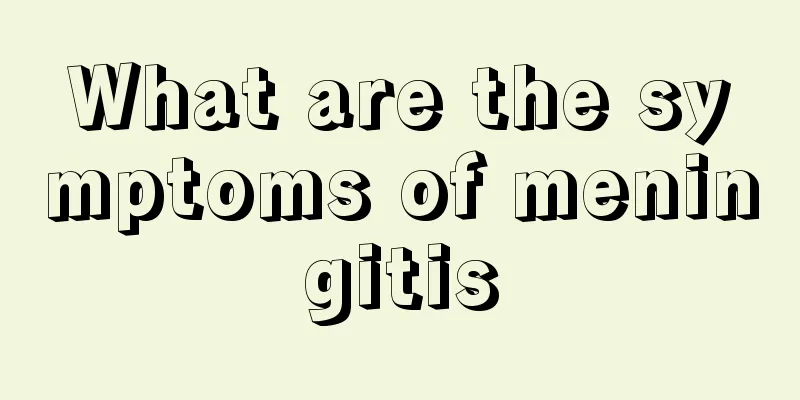What are the symptoms of meningitis

|
After the onset of meningitis, the symptoms are not particularly obvious. Usually, the body temperature will be felt to be very high, and there will be symptoms of convulsions, and frequent fever, headache, nausea, etc., which may make people mistakenly think that they have a cold. In addition, hallucinations and inability to control one's own behavior may occur. Such phenomena are symptoms of meningitis, and people should go to the hospital for examination immediately. Based on the history of otitis media, signs of meningitis, and lumbar puncture and cerebrospinal fluid testing, the diagnosis is generally not difficult. In recent years, due to the widespread use of broad-spectrum antibiotics, acute symptoms have been mostly suppressed, and the cerebrospinal fluid chemistry has not changed much. The protein may increase slightly, sugar and oxides may be within the normal range, and the white blood cell count may increase slightly. Especially if not treated properly, it may develop into focal or persistent meningitis, which can easily be confused with mild tuberculous meningitis or epidemic cerebrospinal meningitis. The disease is characterized by high fever, nausea, vomiting, and the appearance of petechiae and ecchymosis on the skin, which are mainly distributed in the shoulders, elbows, buttocks and other parts that are easily subjected to pressure. The pathogens can eventually invade the meninges and develop into meningitis, with symptoms such as meningeal irritation and increased intracranial pressure, such as irritability or drowsiness, convulsions, increased headache, frequent vomiting, and persistent high fever. Infants will show symptoms such as refusal to feed, staring, screaming, a full anterior fontanelle, and signs of meningeal irritation. Fulminant meningococcal disease may cause symptoms of acute adrenal cortical insufficiency due to adrenal cortical hemorrhage, such as severe shock, pale complexion, cold limbs, undetectable pulse, decreased or unmeasurable blood pressure, rapid heart rate, dull heart sounds, and coma. If discovered and treated early, the disease has a high cure rate. Most deaths are of the fulminant type, with the patient dying from severe shock or brain herniation within a short period of time. Children with common type of disease can be completely cured if they receive appropriate treatment in the early stage. Symptoms in infancy are often atypical and difficult to diagnose. If treatment is delayed, even if the baby survives, sequelae are likely to occur. |
>>: Symptoms of left ureteral stones, these five should be discovered early
Recommend
Repeated skin allergies
Repeated skin allergies are a common disease. Man...
What are the hazards of glioma
Glioma is familiar to everyone. It is common in y...
Throbbing pain above left chest
Myocardial ischemia is a relatively common heart ...
How does rectal cancer develop
There are many causes of colorectal cancer, mainl...
Can women use self-examination in the early stages of breast cancer? 4 things to note about breast cancer in women
The incidence of breast cancer in women is very h...
Can peony petals be soaked in water to drink?
Peony is our national flower. When it blooms, it ...
Uses of sesame leaves
Sesame is a kind of food that many people like to...
How to remove dampness and toxins
Humidity is a symptom that affects physical healt...
What are the symptoms before death from lung cancer bone metastasis? Three common symptoms before death from lung cancer bone metastasis
Lung cancer is a malignant tumor that occurs in t...
What tea should I drink for dry mouth, bitter taste and bad breath
Sour, sweet, bitter, spicy and salty are five fla...
Are sesame oil and pepper oil the same?
In our lives, many people prefer to eat sesame oi...
Can bad habits lead to colon cancer?
What are the causes of colon cancer caused by bad...
How to smoke well?
People who smoke can be seen everywhere in life. ...
Before autism test, you need to know these
Autism, also known as childhood autism, is a very...
Attention! What are the methods to treat brain cancer?
In recent years, brain cancer has become one of t...









